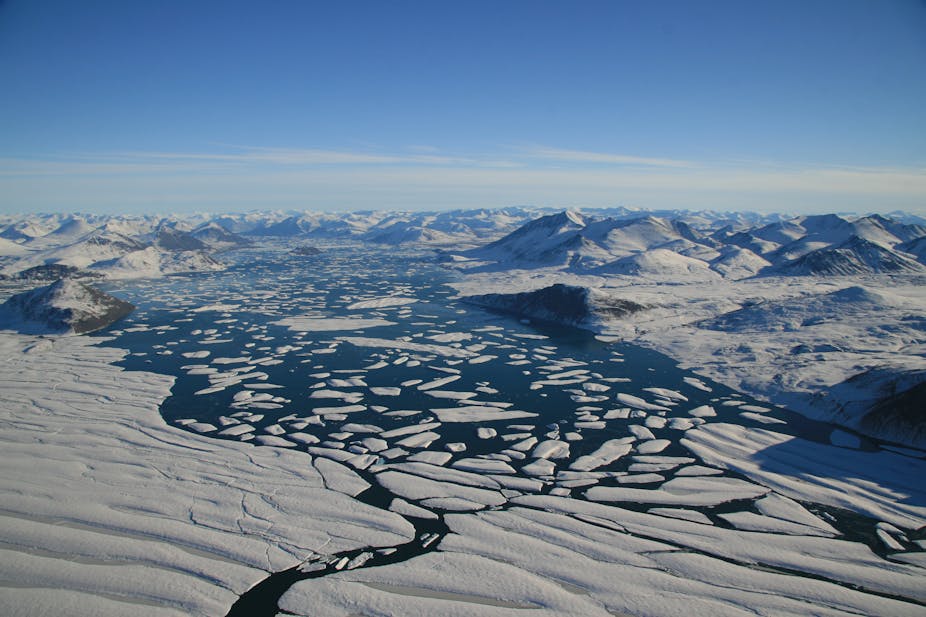Half of Canada’s ancient ice shelves have disappeared in the last six years, researchers have said, with new data showing significant portions melted in the last year alone.
The rate at which ice melts is seen by climate scientists as an indicator of the pace of global warming.
Satellite images released by researchers from Carleton University in Ottawa show that most of the Serson Ice Shelf broke away during the Canadian summer this year.
Serson shelf before Canadian summer 2011

Serson shelf after Canadian summer 2011

The Ward Hunt Ice Shelf split into two separate pieces during the Canadian summer this year, the images show.
Ward Hunt shelf before Canadian summer 2011

Ward Hunt shelf after Canadian summer 2011

This ice lost during the Canadian summer this year equals up to three billion tonnes or about 500 times the mass of the Great Pyramid of Giza, a statement released by the university said.
“Since the end of July, pieces equaling one and a half times the size of Manhattan Island have broken off,” said Luke Copland, researcher in the Department of Geography at the University of Ottawa. Oil rigs in the Beaufort and Chukchi seas may be at risk from large icebergs that broke off the shelf and are now floating south, he said.
Assistant Professor Derek Mueller, a researcher in the Department of Geography and Environmental Studies, said that Canadian ice shelves had halved in size since 2005.
“The ice shelves were formed and sustained in a different climate than what we have now. As they disappear, it implies we are returning to conditions unseen in the Arctic for thousands of years,” he said.
Professor Steven Sherwood, Co-Director of the University of NSW’s Climate Change Research Centre, said the rapid pace of melting showed that recent global warming was unnatural.
“The real significance of this, in my view, is that this ice has reportedly been there for thousands of years. The same is true of glaciers that have recently disappeared in the Andes. These observations should dispel in one fell swoop any notion that recent global warming could be natural,” he said.

